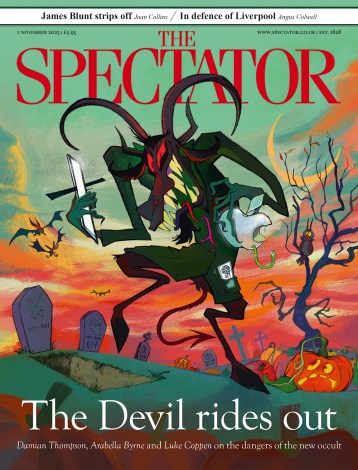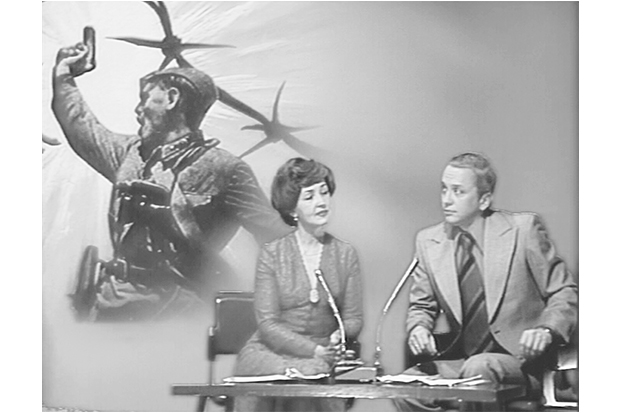In the opening chapter of her history of Soviet Central Television, Christine E. Evans observes two Russian televisual displays of 2014. February saw the opening ceremony of the Sochi Winter Olympics — which sought to depict a millennium of national history using glitter and gameshow grandiosity. April brought the stern, but no less theatrical, Direct Line with Vladimir Putin — an annual phone-in — during which the president celebrated Crimea’s annexation with an orgy of televisual patriotism. Although more glitzy than their Soviet-era equivalents, both can be seen as displays of continuity in Russian broadcasting, rather than incidences of invention. As Evans explains:
The highly televisual Putin era represents the culmination of a long Soviet — now Russian — ‘era of television’. This era began in the late 1950s, when television arrived as a mass medium, found its enduring forms in the second half of the 1960s, and realised its multiple, contradictory visions in the decades that followed. The chief feature of this era was a persistent search for new ways of unifying a diverse public, legitimising authority, and performing the state’s responsiveness to its citizens — all without recourse to either shared belief in a single ideology or to genuinely competitive elections.
In the aftermath of Stalin’s death in 1953 — and the thaw which accompanied Nikita Khrushchev’s denunciation of the late Soviet leader — Central Television embarked on a flurry of creativity. Well aware of light entertainment’s ‘ostensibly pathological commercial role in the capitalist West’, TV pioneers sought to create programming that had a Soviet value system. As Evans explains,
Central Television’s ambitious workers remained committed to the view that, in their hands, television was high-status, masculine, experimental transformative culture that addressed the state’s most pressing political and economic concerns.
A divergent Soviet TV schedule emerged where ‘foreign news was high status, as in the West, [but] so were gameshows, a genre near the bottom of prestige hierarchies in the capitalist world’. Russia’s interest in these genres should not be derided. Light entertainment brought the notion of ‘play’ to a strictly censored media. Russia’s first attempt at the gameshow genre, Evening of Merry Questions (Vecher veselykh voprosov) was broadcast in May 1957. It was hoped that putting ‘unvarnished, unmediated ordinary people and everyday life on screen could convey the revolutionary transformation of Soviet life’. In fact, VVV primarily served to highlight the dangerously subversive consequences of live broadcasting. The show was dramatically axed on 29 September 1957, when
an excessively easy audience contest led to the arrival of an unruly crowd of nearly 700 poorly dressed Muscovites — some drunk, one carrying a live chicken — who flooded into the theatre, overwhelming the stage and tearing down the curtain.
In the aftermath of VVV Central Television’s staff were momentarily terrified, but continued to push televisual ideas. Reforms to Stalin-era legislation saw Khrushchev cut the official working week from 48 hours to 41. The USSR was still a young entity — with new holidays, and new ideological reasons to celebrate them — so variety shows, which drew on the traditions of the Russian stage, became a cornerstone of programming.
Little Blue Flame — a variety show that hit screens in April 1962 — continued to push the limits of ‘experimentation’. It was named after a popular Moscow café which attracted educated young people, and the creators hoped to replicate the atmosphere by hosting evening chats with free-thinking performers, cosmonauts and foreign celebrities. Unfortunately, their portrayal of Soviet society as ‘a relatively non-hierarchical, voluntaristic, international community’ didn’t chime with the spirit of Red Square military parades during public holidays. Management soon brought pressure to include more ‘conventional’ Soviet heroes ‘whose presence was not always as spontaneous or friendship-based as the show’s format would require’.
Little Blue Flame was at its lowest ebb when Stalin’s austere personal radio announcer, Yuri Levitan, was included in the line-up — to read the macabre wartime radio addresses he’d made to the Soviet people. The television pundit Sergei Muratov was furious. He didn’t dispute that Levitan’s speeches had been rousing, but concluded that when delivered ‘in the salon setting, surrounded by little tables, smiling girls with senseless hairstyles and accompanied by polite applause, it looked vulgar and was simply shameful’.
Soviet television was addled with the same kitsch happenings as its western counterparts. Imagine the comedians Lev Mirov and Mark Novitskii greedily tearing open gifts beneath a studio Christmas tree — to discover a cassette of the Ukrainian child singer Boris Sadulenko singing ‘O Sole Mio’ in Italian. Picture the same duo approaching robots and call centres crewed by singing operators to decide their show’s line-up. A project of the same era entitled The Club of the Merry and Resourceful (Klub veselykh i nakhodcivykh or simply KVN) was a blockbuster gameshow. Intended to be a truly egalitarian and talent-led antidote to equivalents in the West, KVN degenerated into a systemic, nationwide cheating extravaganza.
Evans wryly notes KVN’s flaws while contextualising its merits. Leonid Brezhnev’s 1964–1982 premiership of the Soviet Union would later be defined by Mikhail Gorbachev as ‘an era of stagnation’. This critique now defines our view of the USSR’s latter decades, but Evans finds a very different story in the archives of Soviet Central Television.
Before and After Midnight and View were designed to show the unfettered discussions which occurred in the average Soviet apartment. When broadcast in the 1980s, they addressed
previously unmentionable topics, such as mass repressions under Stalin, the human and economic costs of the war in Afghanistan, living and working conditions of striking Soviet miners, and even the possibility of at last burying Lenin’s preserved body.
But Evans shows that both, though created at pace in 1986, directly copied rejected proposals from the 1970s — found stashed in a senior editor’s desk. Through her impeccable study of primary sources, Evans demonstrates how the censored creativity of the Brezhnev era laid the groundwork for television which would catalyse perestroika — and ultimately change the world.






Comments